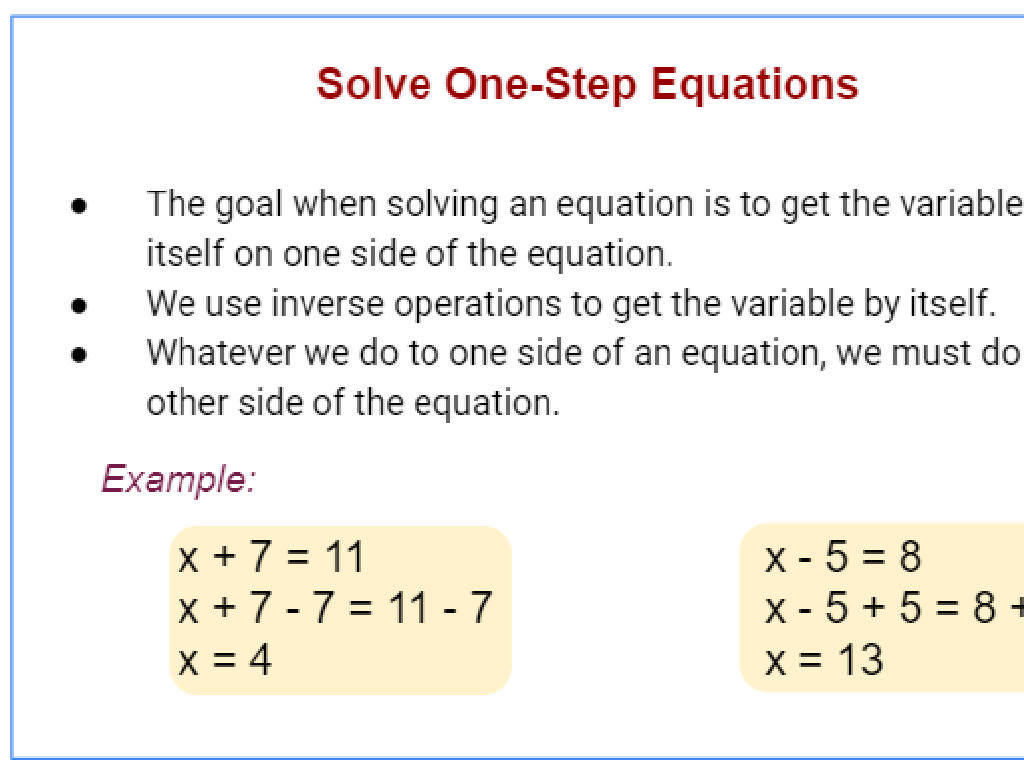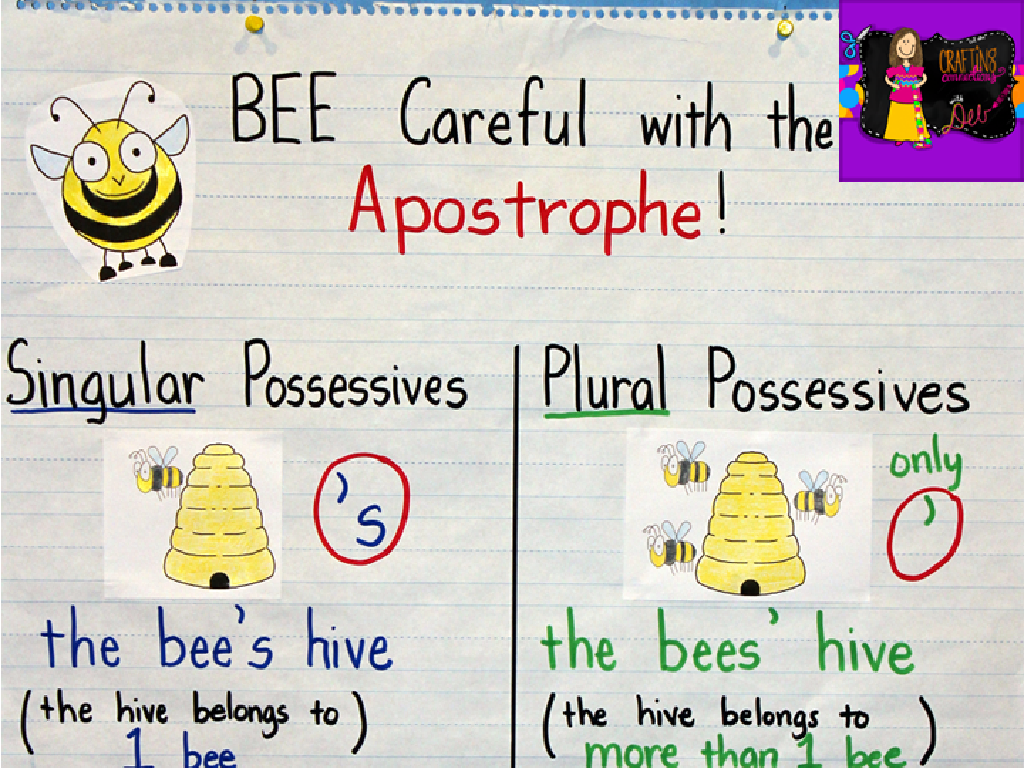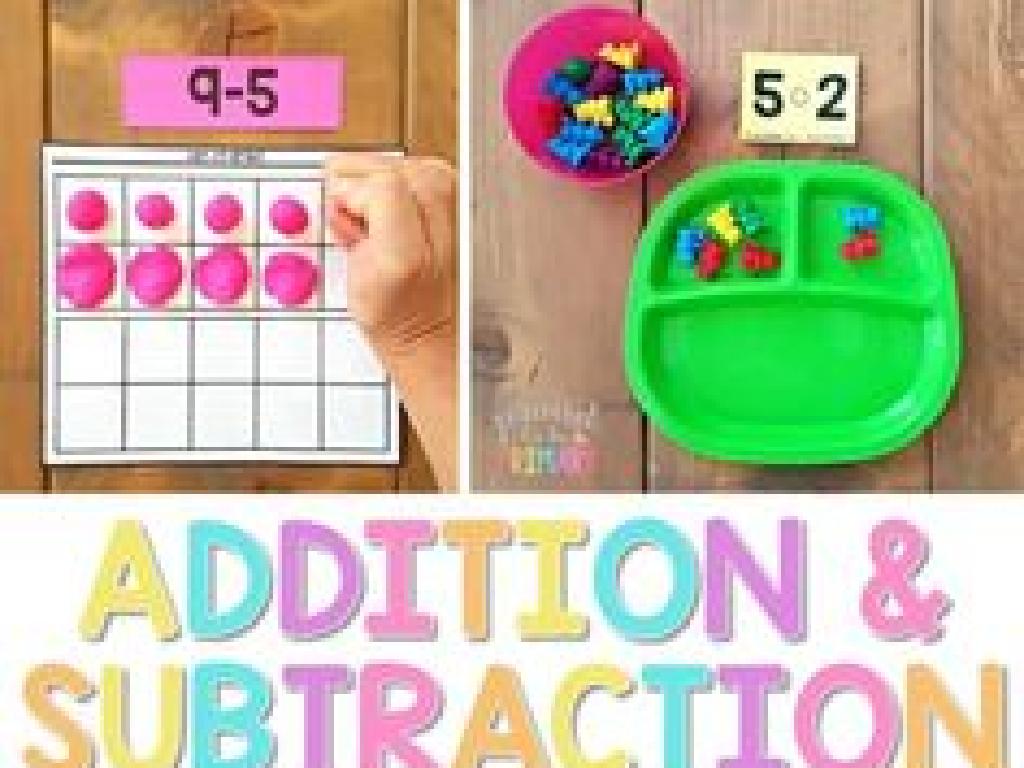Identify Functions Of Plant Cell Parts
Subject: Science
Grade: Fifth grade
Topic: Cells
Please LOG IN to download the presentation. Access is available to registered users only.
View More Content
Exploring Plant Cell Functions
– Plant cells as building blocks
– Just like bricks in a building, plant cells are the basic units that make up plants.
– Functions of plant cell parts
– Each part of a plant cell has a unique role, like how leaves make food through photosynthesis.
– Importance of learning about cells
– Knowing about cells helps us understand how plants grow, heal, and produce oxygen.
– Interactive cell exploration
– We’ll use models to examine the different parts of a plant cell and their functions.
|
This slide introduces the concept of plant cells as the fundamental units that make up all plant life. Emphasize the analogy of cells as building blocks to help students visualize their importance. Discuss the various functions of plant cell parts, such as chloroplasts for photosynthesis, cell walls for structure, and vacuoles for storage. Highlight why learning about cells is crucial for understanding life processes, environmental impact, and the role of plants in ecosystems. Engage students with an interactive activity where they can build or draw their own plant cell model, labeling each part and its function. This hands-on approach will aid in retention and comprehension of the material.
Exploring Plant Cells: The Building Blocks of Life
– What is a cell?
– The smallest unit of life, basic building block.
– Cells: Life’s foundation
– All living things are made up of cells.
– Plant vs. Animal Cells
– Plant cells have cell walls and chloroplasts, unlike animal cells.
– Key parts of plant cells
– Explore parts like the nucleus, cell wall, and chloroplasts.
|
This slide introduces the concept of cells as the fundamental units of life, emphasizing their role as the basic building blocks for all living organisms. It’s crucial to highlight the differences between plant and animal cells, such as the presence of a cell wall and chloroplasts in plant cells, which are absent in animal cells. These structures give plant cells their unique functions, like photosynthesis. The slide sets the stage for a deeper dive into the specific functions of plant cell parts, fostering a foundational understanding of cellular biology in plants. Encourage students to think about how cells work together to create the diverse forms of life we see in the world.
Exploring Plant Cell Parts and Their Functions
– Identify plant cell parts
– Learn the names and locations of each part within a plant cell.
– Cell wall and membrane roles
– The cell wall provides structure; the membrane controls entry and exit of substances.
– Chloroplasts: The Powerhouse
– Chloroplasts create food for the plant through photosynthesis.
– Understanding cell part functions
|
This slide aims to introduce students to the various components of a plant cell and their respective functions. Start by familiarizing them with the names and locations of each part, using diagrams for visual aid. Explain the protective and structural role of the cell wall, and the selective permeability of the cell membrane. Highlight the importance of chloroplasts in photosynthesis, which is crucial for the plant’s ability to produce energy. Ensure that students understand how each part contributes to the cell’s overall function and survival. Activities can include labeling diagrams, creating models of plant cells, or matching cell parts with their functions.
Deep Dive: Functions of Plant Cell Parts
– Nucleus: The Control Center
– The nucleus directs cell activities and contains DNA.
– Mitochondria: The Energy Producers
– Mitochondria convert nutrients into energy for the cell.
– Vacuoles: The Storage Bins
– Vacuoles store water, nutrients, and waste.
– Chloroplasts: Photosynthesis Site
– Chloroplasts use sunlight to make food for the plant.
|
This slide provides an overview of the key organelles in a plant cell and their functions. The nucleus acts as the brain of the cell, housing genetic material and orchestrating cell processes. Mitochondria are the powerhouses, breaking down nutrients to release energy. Vacuoles are essential for maintaining the cell’s structure and storing substances. Chloroplasts are unique to plant cells, allowing them to convert sunlight into glucose through photosynthesis. Encourage students to think of the cell as a tiny city, with each organelle performing a specific job to keep the city running smoothly. Use diagrams to visually represent each part and its function.
Photosynthesis: A Closer Look
– Chloroplasts’ role in food production
– Chloroplasts convert sunlight into glucose, a plant’s food
– Photosynthesis equation
– 6CO2 + 6H2O + light energy C6H12O6 + 6O2
– Importance of photosynthesis
– It’s essential for plant growth and oxygen production
– Photosynthesis sustains life
|
This slide delves into the process of photosynthesis, where chloroplasts within plant cells use sunlight to synthesize food from carbon dioxide and water, releasing oxygen as a byproduct. The equation for photosynthesis is a simple representation of this complex chemical process. Emphasize the importance of photosynthesis in maintaining life on Earth, as it is not only crucial for plant life but also for providing the oxygen that all breathing organisms need. Discuss how plants are the foundation of most food chains. Encourage students to think about how sunlight is converted into energy they can use every day.
Interactive Activity: Build a Plant Cell Model
– Class activity: craft a plant cell
– Gather materials for the model
– Clay, styrofoam, paint, and labels
– Follow steps to build the cell
– Shape cell parts, paint, and label them
– Discuss each part’s function
– Share what each part does in a plant cell
|
This interactive class activity is designed to help students learn about plant cell parts by creating their own 3D models. Provide a variety of materials such as clay, styrofoam, paint, and labels for students to build their models. Guide them through the steps: shaping the cell and its organelles, painting them to distinguish the parts, and labeling each part with its name and function. As they build, discuss the role of each part, such as the nucleus controlling cell activities or the chloroplasts enabling photosynthesis. This hands-on experience reinforces their understanding of plant cell functions and engages them in a fun, educational project.
Class Activity: Building a Plant Cell Model
– Outline your cell on a plate
– Use a large paper plate as your cell’s base
– Fill in cell parts with craft materials
– Use items like yarn, beads, and clay to represent organelles
– Label each part of your cell model
– Write the name of each part on a small label and attach it
|
This hands-on activity is designed to help students identify and understand the functions of plant cell parts by creating a 3D model. Provide a variety of craft materials such as yarn (for the endoplasmic reticulum), beads (for ribosomes), and clay (for the nucleus). Students will first draw the outline of a plant cell on their plates, then use the materials to fill in the cell parts, such as the nucleus, chloroplasts, and cell wall. Each part should be labeled correctly. This activity will cater to different learning styles and promote creativity. Possible variations include using different materials for organelles or having students explain the function of each part as they add it to their model.
Plant Cell Functions Review & Q&A
– Recap: Plant cell parts
– Match parts to functions
Can you link the nucleus to its function?
– Q&A session
What questions do you have about chloroplasts?
– Reinforce learning
|
This slide is designed to review the functions of plant cell parts and to engage students in a Q&A session to reinforce their understanding. Start by recapping the main parts of a plant cell, such as the nucleus, cell wall, cell membrane, chloroplasts, and vacuoles. Then, challenge the students to match each part with its function. For example, the nucleus acts as the control center, while chloroplasts are responsible for photosynthesis. Open the floor for a Q&A session, encouraging students to ask questions about any cell part they find confusing or intriguing. This interactive review will help solidify their knowledge and prepare them for further studies on plant cells. Provide additional examples or explanations as needed to clarify any misconceptions.
Wrapping Up: Plant Cell Mastery
– Congratulations on your hard work!
– Homework: Draw a labeled plant cell
– Include all the parts we learned today
– Discover: What makes animal cells unique
– Think about how plant and animal cells differ
– Next class: Dive into animal cell parts
|
Great job today, students! You’ve learned about the various parts of plant cells and their functions. For homework, reinforce this knowledge by drawing a plant cell and labeling each part, such as the cell wall, chloroplasts, and nucleus. This will help solidify your understanding of plant cell structure. Next class, we’ll compare these to animal cells, which have their own unique characteristics. Be prepared to explore how animal cells differ from plant cells and what parts they have in common. This will set a foundation for understanding the complexity of life at a cellular level.






